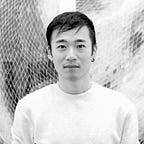Week 13 reflections
Tim Teenan reflected in his article “Coronavirus had killed the power of touch” that “haptic technology seems set to bring more and more of the tactile realm into cyberspace, transforming touch into a distance sense like sight and giving it an alternative virtual life.” While this may seem like a novel transition in how we perceive tactility, artists have already been investigating how the sense of touch is not necessarily a felt experience on a superficial level; that is, the necessity of touching as feeling the characteristics of an object. Artists like color field painters and modern masters such as Mark Rothko and Barnett Newmann have already been exploring through their paintings the ability to stir the viscera of the audience while bypassing the necessity to touch the works themselves to experience their physicality. As Maria Puig de la Bellacasa aptly writes in “Touching Visions,” touch involves contact but not necessarily a physical one; it is not “the mastery of dectrous manipulation but a skillful recognition of vulnerability (113).”
Touch is something that is also a cultural phenomenon; the intimate touching between strangers and distant acquaintances that dominate European societies is a foreign, and startling contrast, to the norms of East Asian societies where introductions occur at a distance. Similarly, some cultures are known as being more “handsy” than others, but does having more physical contact imply more intimacy between people?
I write as a reflection of growing up in New York City while being raised in a fairly conservative Korean household, and as such, have experienced the full spectrum of touching and non-touching societies. That is not to say that Korean society is not a tactile one; in fact, Koreans are trained to be masters in dexterity since childhood: to master chopsticks and become adept scientists, draftsman, cooks, seamstresses..etc as defined by cultural and societal expectations. And indeed, in a highly superficial society Koreans are also keenly aware of their physical characteristics: touching their eyes, lips, the softness of their skins: observing and wondering how one could edit these almond-shaped eyes.
